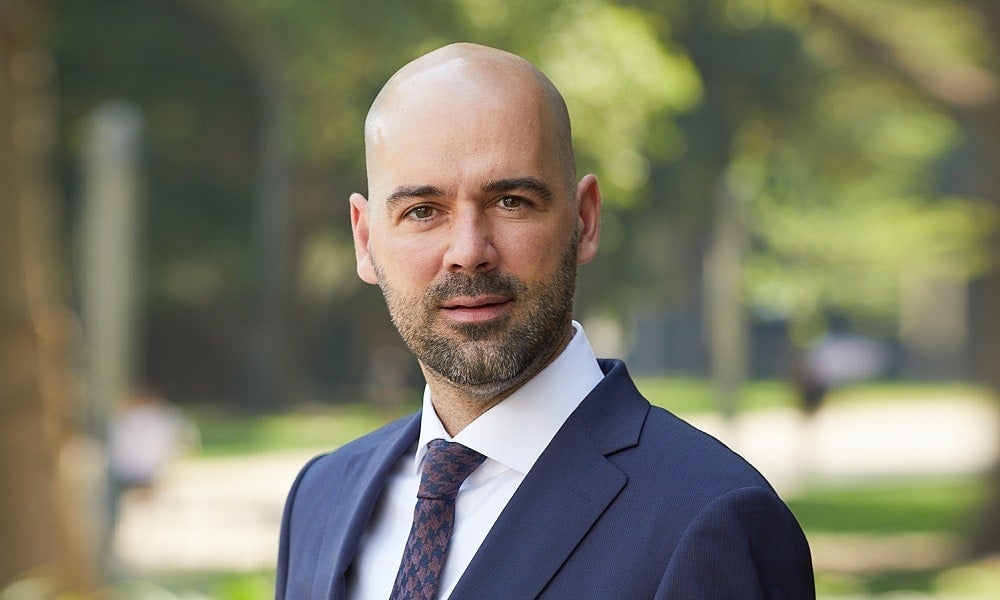Applying the science of supply chains to the art of talent management
The pandemic turned well-established supply chain and HR management strategies on their head, and there are important lessons in this for talent management professionals
The covid pandemic exposed the fallibility of ‘just-in-time’ supply chains and elevated the importance of business continuity over cost. Supply chain resilience has been the catchcry of organisations that have been impacted by disruptions, and supply chain management has been tested and refined in the face of covid and other geopolitical challenges.
As a functional discipline, talent management has also been challenged in similar ways to supply chain management. Companies are realising that a scarcity of talent can act as a chokehold on growth and prevent them from carrying out operations when needed. Indeed, many organisations globally are struggling with labour supply shortages and turnover of skilled talent, which is increasingly diverse, mobile and transient. In these dynamic labour markets, organisations require new approaches to talent attraction, selection, acquisition and retention.
How talent management was turned on its head
Indeed, the normal search-recruit-onboard-develop-promote-retain lifecycle was significantly disrupted through covid, according to Frederik Anseel, Professor of Management and Senior Deputy Dean at UNSW Business School. It is taking a long time to rebuild the normal flow in the lifecycle because he said companies have experienced gaps in each phase of the cycle and industries have accelerated and slowed at different paces throughout the pandemic and recovery. “It does not often happen that you see macro-trends so directly and immediately impacting business practices at the firm level,” he said.
“The basic pattern that has driven changes is what we would call structural reallocation. I’m generalising across countries and continents here to make the key trends visible, but these trends played out at different speeds and different times across the world, but the result is that these dynamics have further reinforced the pattern globally.”

Briefly summarised, what happened was that covid lockdowns or people self-imposing isolation were a major shock to a lot of industries (like travel, tourism, catering, entertainment and events, education), and Professor Anseel observed a general outflow of people in industries that relied on personal interaction as a business model. The overall workforce in those industries needed to reduce (or was unable to) work, he said: “in employment statistics, we see that these people migrated to other industries where they could use their transferable skills or they first spent time reskilling.
“We also see however in employment statistics that a large cohort is simply not returning to work. It is like they have – voluntarily or involuntarily – decided that their active work lives are over. We do not have a lot of information about those groups of people, but that missing cohort is partly explaining labour shortages and the war for talent,” Professor Anseel added.
At the same time, during covid other industries have expanded quickly, and sectors and businesses that were able to take advantage of remote work boomed. “This means tech companies and those that shifted to remote work, but also traditional business that were taken over by their remote equivalent (think restaurants being driven out by take-away services). Those industries needed to quickly expand and hire, but there was not enough supply of skills and people for their demands,” he said.
So the covid shock had an uneven effect across sectors. Some industries were experiencing insufficient demand and unemployment, while others were doing economically very well and experiencing shortages (and inflationary pressures as a result). This uneven pattern results in structural reallocation of people and skills, according to Professor Anseel: “it means people first need to leave jobs, need to reskill or retrain, then seek new employment and learn the ropes of a new job,” he explained.
“Because it happened across the whole world at the same time, but each individual is taking these decisions only for themselves, is it a very inefficient and slow matching process. Think of it as a very large puzzle that suddenly gets tossed around and every single piece of the puzzle needs to find a new place in a new picture. On top of all that, we had closed borders, education systems that got disrupted, internship and training programs that got cancelled. You can see how this is basically a failed supply chain. The normal way of how organisations would identify, recruit, select, onboard and train people got completely disrupted.”
Read more: How has Airbnb’s "live and work anywhere" policy really worked?
How talent pipelines were disrupted
Professor Anseel’s observations were echoed by Lars Häggström, a Senior Adviser at IMD and a former CHRO at Stora Enso, Nordea and Gambro. As many multinationals has diversified and sometimes localised their supply chains following the pandemic to reduce the risks associated with “putting their eggs in one basket” with offshore manufacturing and production partners, Mr Häggström said there are parallels for HR executives.
“If you work in supply chains, you’ve learned that the world is too uncertain to have a truly global supply chain. So it is important to strike a balance,” he said. “And I think HR executives need to realise that they cannot place their full dependency on this notion that you can go after talents globally and make them work for you either virtually or onsite. You need to ensure that you have plans and strategies in place to source and acquire the right capabilities closer to home.”
Mr Häggström has observed many companies and senior HR leaders actively working to shore up stronger, long-term pipelines of talent more locally. This has resulted in a significant shift in priorities for heads of HR, who might be spending up to 25 per cent of their time trying to influence government officials and educational institution leaders to prioritise the skills and capabilities required for the future. “It’s a bit like hedging,” he explained.
“You can certainly look at a global workforce, but you cannot place all your bets there. You need to build on what you can source locally for talent. And the other way around isn’t possible either, because there are specific skills and capabilities required that you may not be able to get locally. So just like the supply chain folk work now, you need to hedge your options between thinking locally and globally, and trying to balance that depending upon your purpose and strategy.”

The talent management challenges facing Besix
HR can learn some valuable lessons from supply chain in ensuring organisational talent pipelines are strong and resilient in the face of ongoing labour market challenges, according to Geert Aelbrecht, Chief People Officer and Group Sustainability & ESG Officer for Besix, a Belgian-based multinational that specialises in construction, infrastructure and marine works, often in contracts with a high level of complexity. With about 12,000 employees working across about 27 countries (predominantly Europe, the Middle East and Australia), Mr Aelbrecht said Besix is facing three major talent management challenges off the back of the past three-plus years of global economic and market turmoil.
The first main challenge is sourcing and hiring individuals with the right technical backgrounds. “We need a lot of technical staff with experience in engineering, construction, electrical engineering or air conditioning units, for example,” said Mr Aelbrecht, who observed a significant decline in the availability of technical specialists, especially in the European market. “This is our major market and where most of our people are sourced from, and there has even been a decline in the number of students that are undertaking technical studies. So we have a talent pool that is shrinking over time, and it’s shrinking really fast.”
This shortage of technical talent has impacted the business operations of Besix, which needs technical talent to not only meet the operational demands of completing projects, but also to help the firm stay on top of increasingly complex technology trends. “With a stronger focus on sustainability for our projects, for example, new technology is being introduced in our industry, and that requires different types of skills. So the big hurdle is to find these technology skills for the different projects,” said Mr Aelbrecht.

This approach is going to become more important in the future, according to Professor Anseel, who explained talent management should be proactive and anticipatory, just like supply chain management. “This means that organisations should proactively identify and develop the talent they need, rather than simply reacting to talent shortages as they occur,” he said.
“To this end, they probably need to develop more data-driven forecasting approaches to predict what skills and talent they’ll be needing in the future instead of just going out to hire when they need it. Many businesses have learned through covid that just-in-time delivery is incredibly risky if supply chains are fragile. The same goes for talent management. Don’t do just-in-time delivery.”
Balancing onsite, remote and hybrid work arrangements
An issue related to global mobility is the shift to digital, remote and hybrid working arrangements, which have presented both opportunities and challenges for organisations in their talent strategies. While such arrangements have opened the door to a broader geographic pool of talent, this talent is potentially more transient and can also be less committed to an employer.
“People feel less loyal because they have emotional and relational attachments to their employers if they’re working from home (that’s why many managers want their people back in the office full-time),” said Professor Anseel.
Remote and hybrid working have become a two-edged sword for organisations, as Mr Häggström observed they have sometimes struggled to secure deeper levels of commitment from workers who have adopted remote and hybrid working arrangements. “How do you make them become part of your culture and be committed to your purpose, your strategy and your culture, when some might not even come to the office ever?” he asked.
Read more: How the hunt for talent changes the labour market power balance
“Different and more novel approaches are required here, otherwise the question that was raised by several of the heads of HR in our network meeting was how much of their full potential are you actually realising? Or are they just there to do some work, and then if they get a better offer they can just easily move on, because there’s no commitment to the organisation and its purpose, strategy and culture? So that’s a big one.”
As a multinational construction company with a diverse range of roles and requirements, Mr Aelbrecht said the geographic mobility of staff and different project locations has presented a unique array of talent management challenges. “We can have projects and roles in cities, but they can also be in quite remote locations. This requires a different mindset with regards to mobility, and being away from the family or away from the partner is becoming an increasingly important issue,” he explained.
“Not only do we have a scarcity of skills, but this issue of mobility of staff combined presents a massive challenge. We don’t call it a war for talent anymore. We call it a war for people; just finding sufficient staff to get a project up and running is already very difficult. This is across both white-collar professionals and blue-collar workers,” he said. “This presents a question with regards to tendering for work. The question is not with regards to if we are capable of doing it, but do we have sufficient staff for doing it? It’s clearly not only a ‘quote unquote’ HR problem, it’s a complete business issue.”
Building internal talent management search muscle
Mr Häggström has also observed an increasing number of companies are building up their internal “search muscle” rather than just hiring external recruiters, underscoring that this is a business-critical issue for many firms. As part of their broader workforce planning strategies, companies are using internal recruiters to scour different geographies and markets in the search for talent. These recruiters gather market intelligence and approach potential candidates in a bid to lure talent or tap information on where to hire the people they need.”
Read more: Five ways to entice employees back into the office
Professor Anseel also said there is significant value in developing your own in-house talent management capacity. “That means having a well-developed learning and development division so that you can identify, support and develop the skills and talents you’ll need in the future without necessarily going to market when everyone else is doing so. Early talent detection and nurturing in by developing diverse and customised career trajectories have never seemed more important,” he said.
This is the case for Besix, according to Mr Aelbrecht, who explained that the company has taken similar steps to address issues associated with talent pipeline disruptions and supply shortages. One of the first changes was to bring 100 per cent of its recruiting in-house, and he said there were important reasons for this.
“We often used a lot of agencies to find candidates for us in the past, but we changed that and now most of our recruitment is done by our own people. Why? Because the first thing that we try to sell now is the culture of the company. And the best salespeople of that culture are people who work in our company. That can be difficult for agencies, as they have multiple clients and they sell it in a different way,” he explained.
Another important shift has been to think more laterally about talent pools and technology that supports this process. As a multinational construction company with operations and affiliates spread across the globe, Mr Aelbrecht looked at how potential talent could be better shared and leveraged across the business. “Everybody was recruiting in their own market, but we didn’t necessarily share information about candidates across our different operations,” he said.
“Like I said, mobility has become a difficult challenge for many. If I find a good candidate but they are not suitable for the region I am recruiting for, perhaps my colleague from another region or affiliated company can use that candidate. So we changed our setup with a global platform that consolidated all recruitment practices, so we had a global database of talent which allowed us to see candidates that we could transfer from one company to another,” he said.

Attracting the right talent in the optimal timeframe
Employer branding has become increasingly important as organisations look to build relationships with potential recruits. Just as the pandemic has made the relationship between buyers and suppliers less transactional and more collaborative, employers are realising that they have to work harder to attract potential recruits.
Mr Häggström points to the increase in employer branding – particularly by larger, more established companies – over the past 5-10 years, he said. “Companies are recognising that they need to spend money to build relationships and attract potential recruits if they want to become the employer of choice,” he observed. “This is particularly the case for more established multinationals that may have older workers and face a staffing crunch as a large percentage of their workforce retires in coming years.”
In response to these challenges, Besix has taken a number of steps. It has overhauled its approach to candidate interviews, which are now much shorter – as is the time to offer. With scarce talent available on the market, Mr Aelbrecht said good candidates are often applying for roles at different companies at the same time. “You need to speed things up in the hiring process, so good candidates get a quick reply; that increases the possibility of being the first to offer before somebody else does. We are really fast in the time between application, interview and an offer now,” he said.
Besix makes to prospective employees are much more explicit, Mr Aelbrecht explained. Offers detail what kind of company Besix is, the remuneration and reward package and how it works, as well as expectations and other details that help candidates better understand exactly what is entailed in working for Besix. “We’re a lot more visual in that, so that helps candidates get a better feel for us as an employer, and that is something that agencies and other recruitment channels struggle with too,” he said.
Subscribe to BusinessThink for the latest research, analysis and insights from UNSW Business School
The talent balance: tipping in favour of flexibility
Professor Anseel echoed Mr Aelbrecht’s experience and noted that, given current demographic trends, the war for talent is not going to go away. “This means talent management should become more customer-centric, just like supply chain management. Organisations should focus on meeting the needs and expectations of their employees (their internal customers) in order to retain and develop top talent,” he said.
Flexibility and customisation will be the key principles driving talent management of the future, and he observed attracting and recruiting scarce talent in a tight labour market is increasingly determined by appealing working conditions. “People are looking for jobs that provide them with flexibility and autonomy to shape their own working lives and careers in a way that fits them best,” said Professor Anseel.
“For those who are not convinced about the wave that is coming, LinkedIn CEO Ryan Roslansky recently provided a notable observation: ‘pre-pandemic, ~1 per cent of all jobs posted on LinkedIn were remote. As of today, that number is ~14 per cent... but that’s not the fascinating part. What’s fascinating is north of 50 per cent of all job applications on a daily basis on LinkedIn go to that 14 per cent of remote jobs.”
